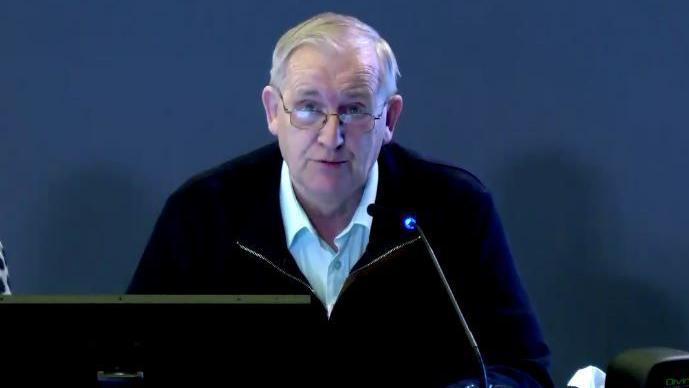Family 'woefully let down' by police investigation
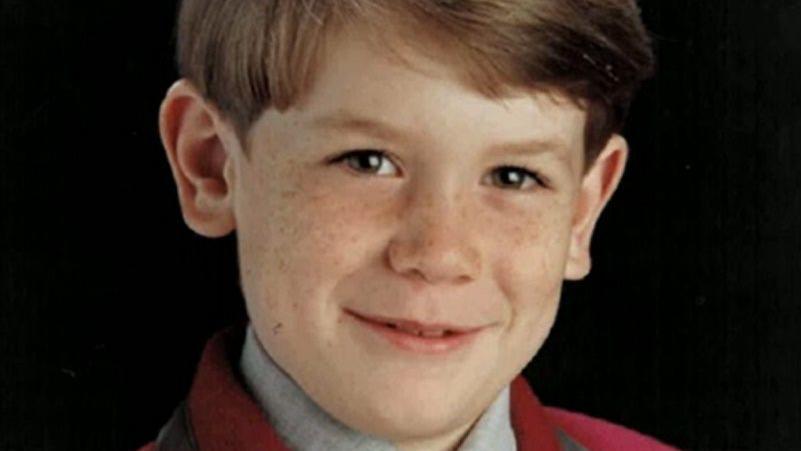
James Barker was 12 years old when he was killed in the attack
- Published
Warning: This story contains distressing details
The father of a 12-year-old boy killed in the Omagh bomb says his family were "woefully let down" by a poor police investigation.
Victor Barker told the Omagh Bombing Inquiry that his son James's life had been taken away from him in the most "evil and barbaric fashion".
He said James, who had taken his sister's place on a school trip to Omagh, was "robbed of his bright and happy future".
The Real IRA bomb killed 29 people in the County Tyrone town in August 1998, including a woman who was pregnant with twins.
Appearing via a remote link, Mr Barker said: "Like so many thousands of others who have lost loved ones in the Troubles, I have some very dark moments.
"But I have done all I can to bring some kind of justice for James and everyone else.
"We have been woefully let down by a very poorly conducted police investigation and, I might add, a chief constable in Sir Ronnie Flanagan who, in my view, fell well short of the mark."
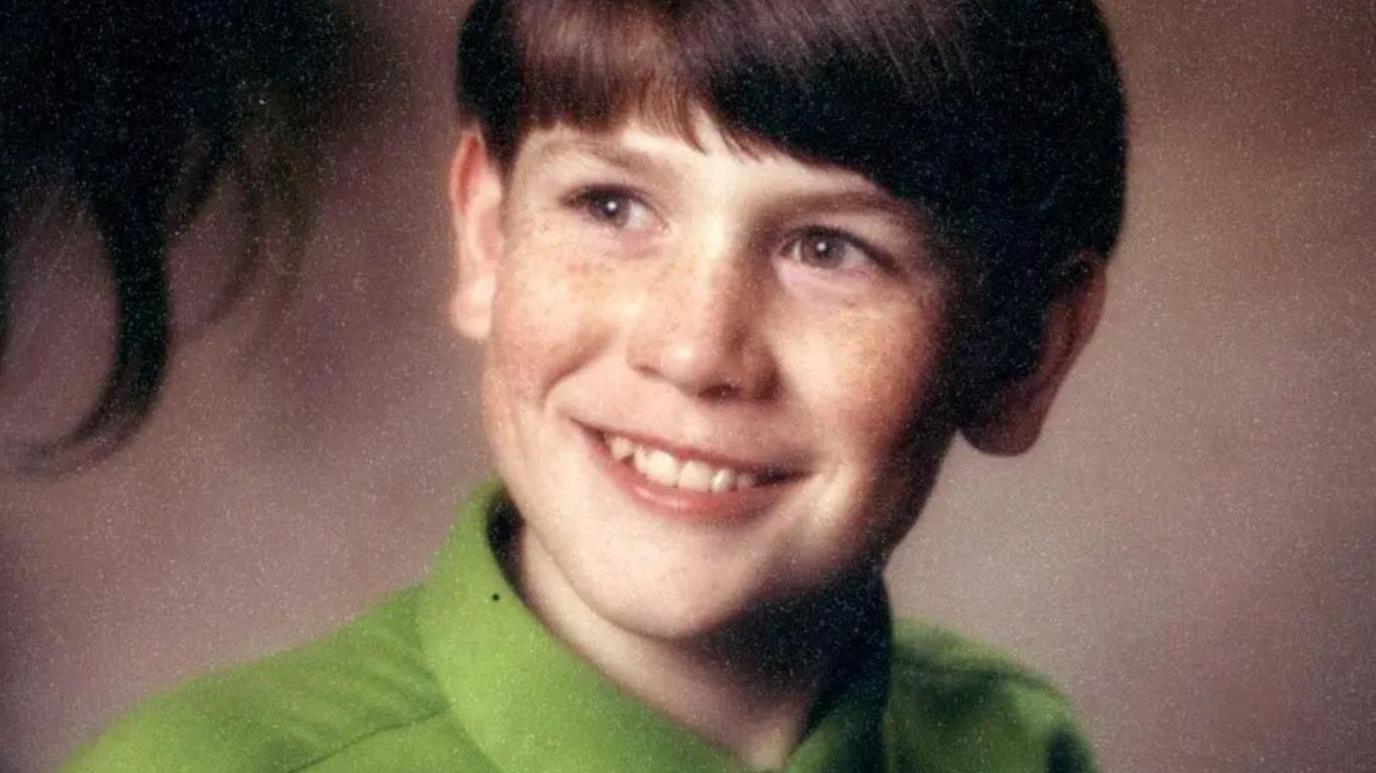
James Barker was one of three schoolboys from Buncrana who were murdered in the explosion
The public inquiry, being held at the Strule Arts Centre in Omagh, has been hearing personal statements from those affected by the bombing.
Mr Barker told the inquiry that James had grown up in England, but his maternal grandparents moving to Buncrana in County Donegal made his wife want to move back to Ireland.
Mr Barker, who stayed in England, said his son loved living there despite missing him.
Mr Barker, who was in Donegal in August 1998, said his daughter was feeling unwell so James asked if he could take her place on a trip to Omagh with Spanish exchange students
"This was the last time I saw my son alive," he said.
"As he left the house that morning he had a life full of possibilities in front of him.
"Little did I know that the life he had built and my wife's dream of a better life for the children was about to be torn apart forever."
He added that he did not believe his daughter has ever recovered from the guilt that her brother James replaced her.
Mr Barker also told the inquiry how he picked up a copy of a newspaper the next day where there was a picture of James on the front page.
"He was on a stretcher. I recall saying to my friends, 'look what they've done to my lovely boy'," he said.
"I simply broke down."
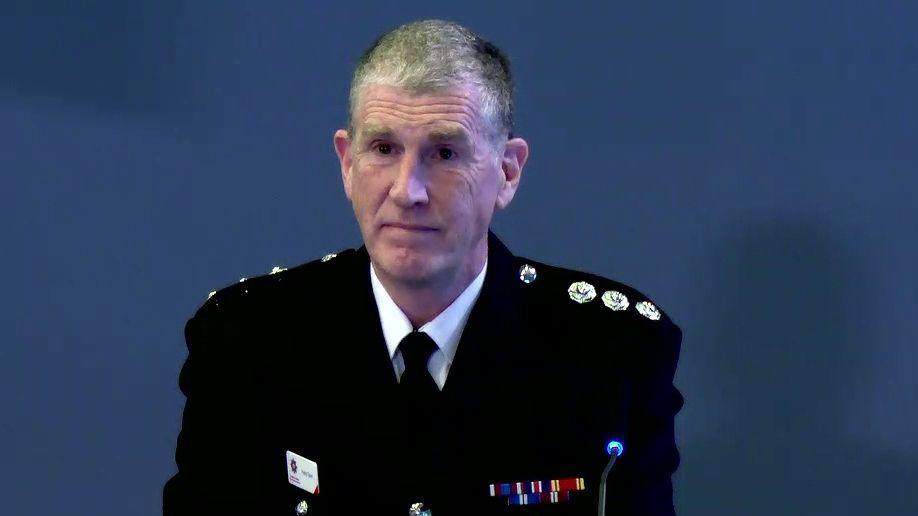
"Nothing I have responded to since the Omagh bomb has ever come anywhere close" - Paddy Quinn
Earlier on Monday, a firefighter who attended the scene of the Omagh bomb likened its aftermath to an image from the Vietnam War.
Paddy Quinn is a current commander for the Northern Ireland Fire Service in the Omagh district.
Mr Quinn, an on-call officer at the time of the bombing, heard the explosion while working at his carpet shop and was the first to arrive at the fire station.
Mr Quinn said none of the firefighters were anxious as there was no mention of casualties and they assumed the area had been cleared.
He was on the first fire engine to go to Market Street and arrived at a scene of "total chaos, devastation, carnage".
Referring to a famous photograph from the Vietnam War, he said: "There was a cloud of dust and there was a young girl running across the road terrified, and that's just the image I have of people from Omagh."
'Where is my wife?'
Mr Quinn described the look of "disbelief" on his colleagues' faces.
He said they were local firefighters working in their home town, who were worried their own family members had been caught up in the bomb.
"They were asking where is my wife, my son, my daughter?" he said.
"But they continued to do the job they were called to do and that was help others and search for others."
He recalled helping an injured woman on to an Ulsterbus and the floor of the bus was red with blood rather than blue.
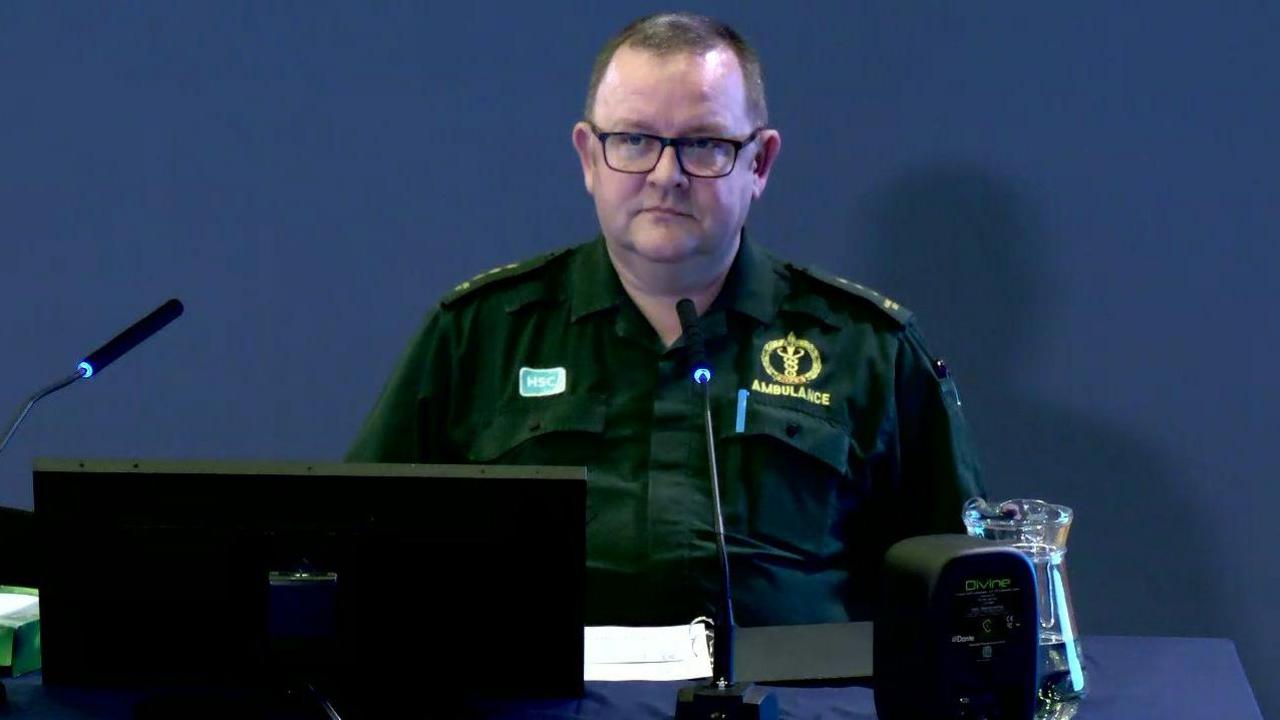
Richard Quigley described the horror of the aftermath of the bombing
Paramedic Richard Quigley travelled to the scene from Altnagelvin Hospital.
When he arrived he said it was "oddly quiet" as patients had already been moved to hospital.
He remembered the smell of beer flowing down the street from the remains of a bar opposite the bomb site.
He said it was the first explosion he had attended and he was involved in recovering bodies which had been moved into shops and an alleyway.
"We had used all the bags we had," he said, and had to source more from the fire service and military.
The bags were then placed on to stretchers.
"I physically checked the body bags to see if I could identify which end was the head or legs," he said.
"What shocked me was not being able to clearly identify either the head or the feet of the patients."
The remains were then transported to a temporary morgue at a nearby Army camp.
Mr Quigley said: "I recall seeing the number of body bags laid out and each had its own area, all in rows with a chair at the end.
"The size of the gym and the number of the body bags on the floor was something that should only have been seen in a movie."
'The end of childhood'
Maeve O'Brien was 13-years-old and was shopping with her younger sister and grandmother.
In a statement read to the inquiry, she said her life was divided into periods before and after the bomb.
"It was the end of childhood," she said.
"Often I would wonder why I survived the bomb and so many others died."
Maeve's younger sister Dervlagh, who was eight, described how her ability to live life had been "uprooted" by the bombing
"Sirens, fire alarms, emergency vehicles in any scenario evoke an extreme panic attack from me." she said.
Timeline of events
Damien Murphy had gone into town to send emails at the library.
In a statement that was read out, he described the screams and smells as overwhelming.
"I first saw people come past me with lots of bleeding, I retrieved some paper towels, telling people to put pressure on the wound," he said.
He added that he met three young Spanish girls who "were bleeding all over".
"My immediate thought was to get people out of here," he added.
What was the Omagh bomb?
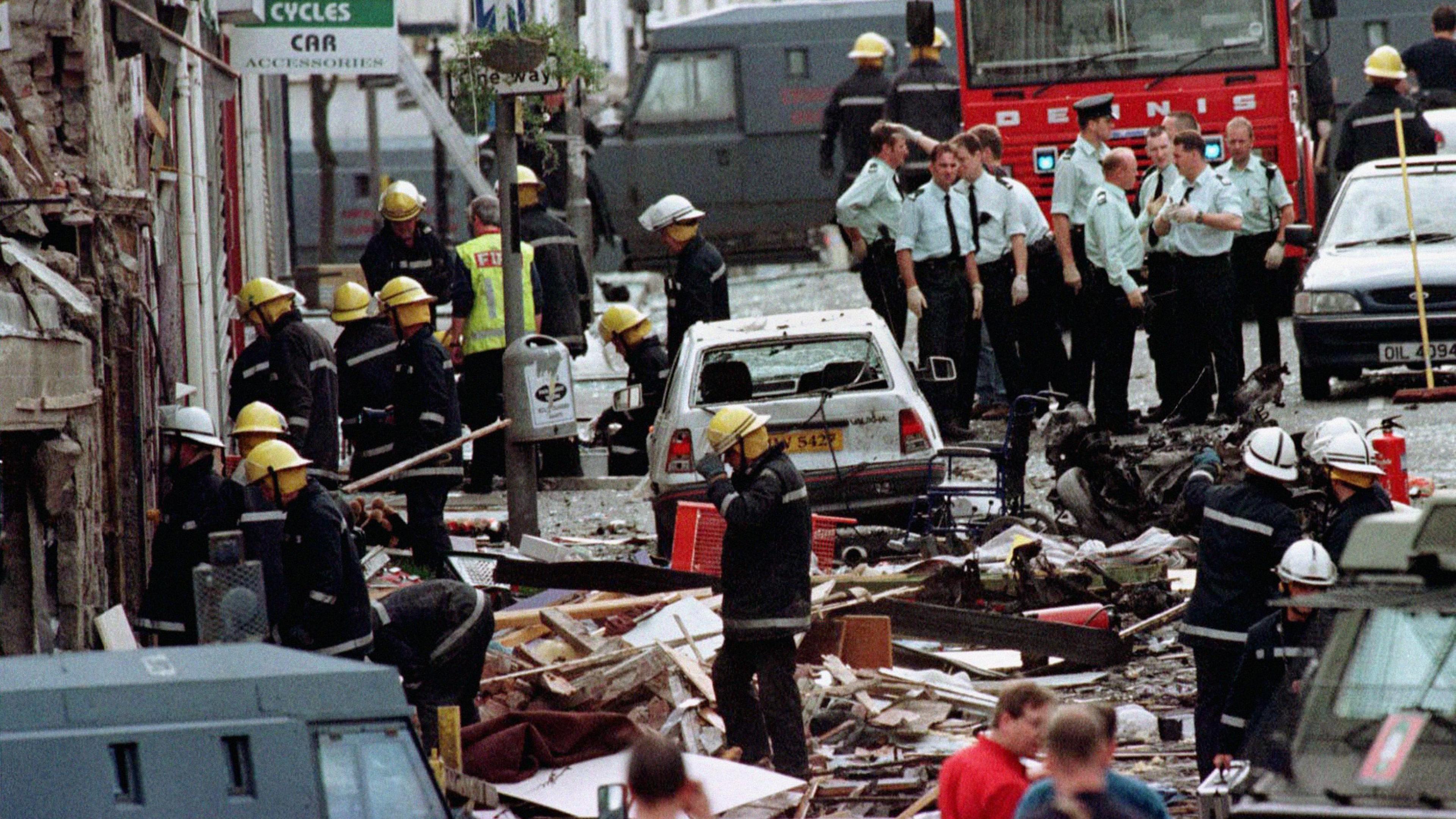
The car bomb exploded in Market Street on a busy Saturday afternoon when the streets were packed with shoppers
The bomb that devastated Omagh town centre in August 1998 was the biggest single atrocity in the history of the Troubles in Northern Ireland.
It came less than three months after the people of Northern Ireland had voted yes to the Good Friday Agreement.
Who carried out the Omagh bombing?
Three days after the attack, the Real IRA released a statement claiming responsibility for the explosion.
It apologised to "civilian" victims and said its targets had been commercial.
Almost 27 years on, no-one has been convicted of carrying out the murders by a criminal court.
In 2009, a judge ruled that four men - Michael McKevitt, Liam Campbell, Colm Murphy and Seamus Daly were all liable for the Omagh bomb.
The four men were ordered to pay a total of £1.6m in damages to the relatives, but appeals against the ruling delayed the compensation process.
A fifth man, Seamus McKenna, was acquitted in the civil action and later died in a roofing accident in 2013.
- Published28 January
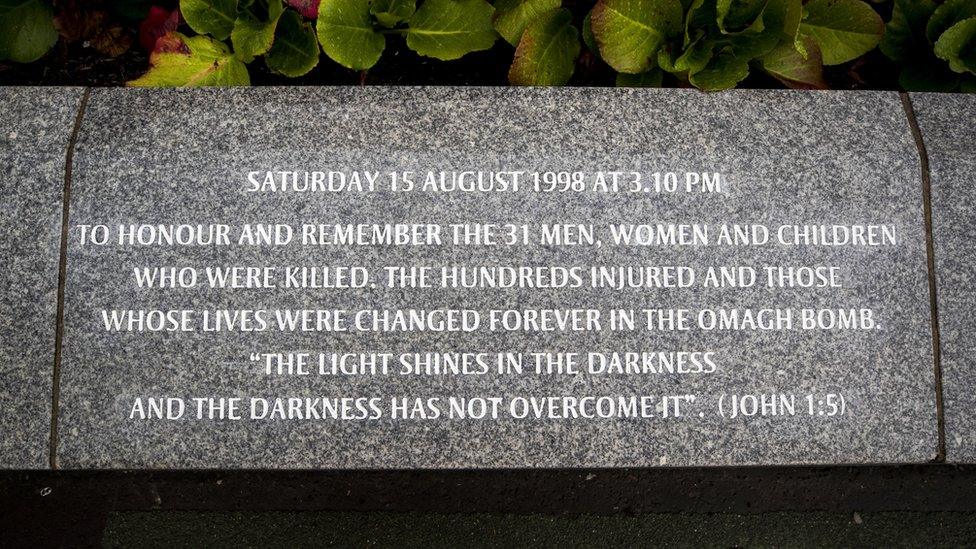
- Published28 January
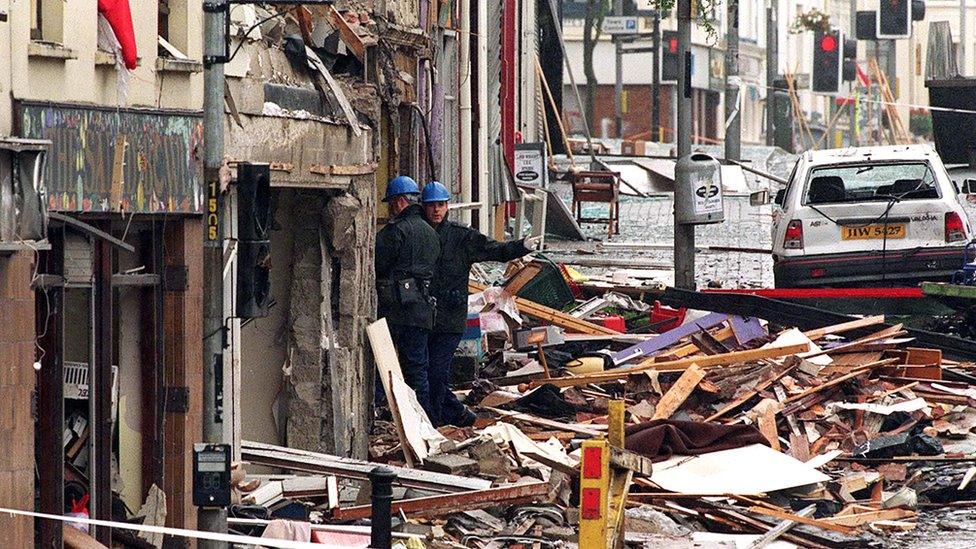
- Published13 February
